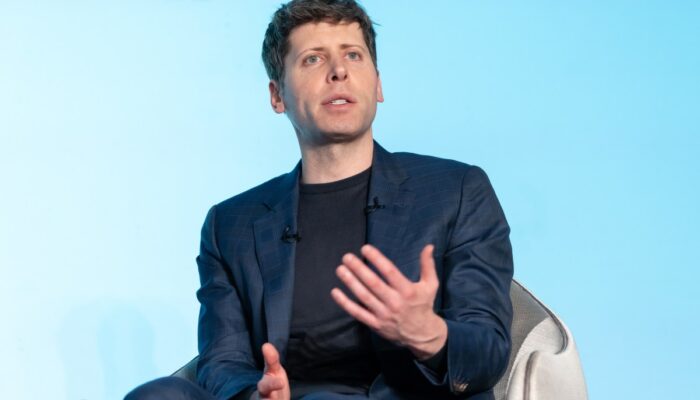The head of the International Atomic Energy Agency (IAEA) said in an emergency meeting on Monday that the escalating conflict in Iran “risks collapsing the global nuclear nonproliferation regime” and that if diplomacy is not pursued, “violence and destruction could reach unimaginable levels.”
The IAEA, the United Nations’ international nuclear watchdog, convened the emergency meeting following US strikes on three Iranian nuclear sites this weekend. In remarks delivered to the organization’s board of governors, Rafael Grossi, the director general of the IAEA, called for a “return to the negotiating table” to allow inspectors for the agency to safely assess damage to the sites and check in on Iran’s nuclear stockpile.
Iran has maintained to the IAEA that no additional radiation has been monitored at the sites throughout the duration of the attacks. IAEA inspectors have not been able to inspect the sites since the crisis began earlier this month.
“IAEA inspectors are in Iran, and they are ready,” Grossi said on Monday. He added that “no one, including the IAEA, is in a position to assess the underground damage at Fordow,” but he expected that the strikes did “very significant damage.”
Fordow, a centerpiece of Iran’s nuclear program and a uranium enrichment facility, was one of three sites struck by US bombs this weekend. Fordow has nearly 3,000 centrifuges stored some 90 meters underground. It was unclear as of Monday morning just how much damage the strikes did to the Fordow site, although some of the damage was visible from satellites. Natanz, another enrichment facility, as well as an important nuclear research facility near the city of Isfahan, which operates three small research reactors, were also attacked. (Israeli forces had also previously targeted Isfahan.)
It is unclear just how much nuclear material has been destroyed thus far. Jon Wolfsthal, the director of global risk at the Federation of American Scientists and a member of the Science and Security Board of the Bulletin of the Atomic Scientists, tells WIRED that it’s likely that Iran, acting on probable intel about the strikes, moved its enriched uranium to different sites a few weeks ago. A political executive at Iran’s state TV network said Sunday that all three sites had been evacuated before the attacks began. Experts also told WIRED that satellite imagery of Fordow from last week showed a lot of activity at the site, including trucks driving in and out.
Grossi told the IAEA board Monday that Iranian roreign minister Abbas Araghchi had sent a letter to him on June 13 claiming that the country would “adopt special measures to protect nuclear equipment and materials.”
“In my response, that same day, I indicated that any transfer of nuclear material from a safeguarded facility to another location in Iran must be declared to the agency as required under Iran’s safeguard agreement, and I expressed my readiness to work with Iran on this matter,” Grossi said.
Grossi told The New York Times that he believed that Iran had moved much of its stockpile of enriched nuclear fuel.
The idea of attacking facilities working to develop nuclear power might immediately bring to mind the worst images of disasters like Chernobyl and Fukushima. But experts say that even if the strikes hit crucial materials, bombing uranium enrichment sites is not likely to yield a large-scale nuclear catastrophe. Despite concerns about widespread radiation, the IAEA maintains that it doesn’t “expect that there will be any health consequences for people or the environment outside the targeted sites,” Grossi said in a previous update issued Sunday.
The biggest current environmental risk from these sites, the IAEA says, is local. Uranium enrichment facilities contain toxic gases and chemicals, similar to what would be stored at any large industrial chemical plant.
The material in enrichment facilities, Wolfsthal says, “is not yet to the point where it can reach a chain reaction where it can sustain a large-scale nuclear explosion.” (The IAEA estimates that Iran has a stockpile of enriched uranium up to 60 percent—not yet high enough to make a nuclear weapon, according to the Bulletin of the Atomic Scientists. The IAEA did report in January that it had found a small amount of substantially more enriched uranium at the Fordow site.) Wolfsthal compares the damage that strikes on sites like Natanz can cause as analogous to a car accident.
“There’s gasoline in your car,” he says. “You have a collision with your car or an accident, you might have a fire, it might even explode. There’s some toxic material that might get released. But it’s going to be fairly limited damage.”
There’s a chance, he adds, that the attacks on Isfahan could have damaged casks holding uranium hexafluoride gas, a radioactive chemical compound, which could spread around the area. But damage from such an explosion is likely to be limited in scope.
“It’s just a big, heavy gas molecule, so it’s not going to go very far,” Emily Caffrey, the director for the Health Physics Program at the University of Alabama at Birmingham, told ABC News.
There is one facility in Iran that could cause significant damage if it is hit. Iran’s only commercial nuclear reactor is located near the city of Bushehr; the site contains thousands of kilograms of nuclear material undergoing chain reactions to produce fuel. (Research reactors, like the ones at Isfahan, use much less fuel than commercial reactors and operate at much lower temperatures, making them less dangerous in the event of an accident.) In comments delivered a day before the US strikes, Grossi said that a strike on the plant “could result in a very high release of radioactivity to the environment.” The Israeli government said last week that its own strikes had hit Bushehr, but Israeli officials later walked back these claims.
“In my technical assessment, attacking a nuclear reactor is really, really, really, really dumb,” Wolfsthal says.
There is also a larger, more long-term environmental threat at hand: the chance that Iran takes final steps following these attacks to actually build a nuclear weapon.
“It is not lost on anybody that Israel and the United States both have nuclear weapons and have attacked Iran, that does not,” Wolfsthal says. “Russia has nuclear weapons and Ukraine does not. North Korea, which has nuclear weapons, is sitting pretty. The message here is nuclear weapons bring you security and immunity and empower you to take action against your adversaries. That’s a very dangerous message that we’re sending to countries that were on the cusp of nuclear options and might decide now to pursue them.”
Grossi’s remarks on Monday echoed this concern.
“One thing is certain, and this is the simple truth: We will not be safer if there are more nuclear weapons in more states around the world,” he said.



